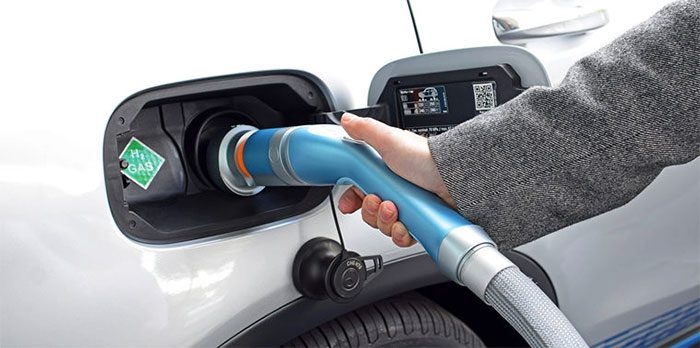Rolls-Royce and the European airline easyJet have announced the successful testing of a hydrogen-powered jet engine. They hope that this new technology will significantly contribute to efforts to reduce greenhouse gas emissions from current aircraft engines.
In a press release, Rolls-Royce confirmed that this test marks the first time a modern aviation engine has successfully used hydrogen as fuel.
The aviation industry is still considered one of the hardest sectors to “clean up,” as electric planes cannot travel as far as conventional aircraft. Additionally, the size of batteries remains too large to enable long-haul flights. This is why engine development organizations are keen on a clean fuel source like hydrogen, which only emits water vapor and carbon dioxide when burned.

Hydrogen-powered jet engine tested by Rolls-Royce and easyJet – (Photo: Steve M Smith/Rolls-Royce).
The two companies utilized the Rolls-Royce AE 2100-A aircraft engine in a ground test in the UK, using hydrogen produced by the European Marine Energy Centre. Since the fuel is derived from wind and tidal energy, the hydrogen used in the test is considered environmentally friendly, often referred to as green hydrogen.
Both Rolls-Royce and easyJet are committed to reducing greenhouse gas emissions and focusing on the production of green hydrogen to achieve their goals. However, green hydrogen is currently scarce and has a very high production cost. Government investments will help alleviate the financial burden on fuel production agencies. Some countries, including the United States, have confirmed plans to invest in modern hydrogen fuel production facilities.
As of now, natural gas remains the primary feedstock in hydrogen fuel production, and this advanced clean fuel is only truly clean when the raw materials used to produce it are also clean. If natural gas is used, the production process will still emit carbon dioxide and exacerbate the greenhouse effect.
According to the International Air Transport Association (IATA), challenges will also lie in the design of new aircraft compatible with advanced fuels. To operate on hydrogen, an aircraft requires a large fuel tank and needs to be redesigned. Calculations by Michael Liebreich, founder of Bloomberg New Energy Finance, indicate that a Boeing 747-400 would need 1 million liters of hydrogen to fly the same distance as it would with approximately 250,000 liters of fossil fuel.

Hydrogen is also a clean fuel being researched for cars – (Photo: Internet).
Given these limitations, it is likely that green hydrogen will initially be used for short-haul flights. According to reports from the European Union (EU), long-haul flights of 3,000 km using hydrogen fuel are expected to emerge by 2035. easyJet is focusing on investing in hydrogen technology primarily because they mainly operate short-haul routes, and Rolls-Royce, a leading engine supplier for aircraft manufacturers, could sell hydrogen-powered jet engines to 400 different brands. Among Rolls-Royce’s customers, both Boeing and Airbus are also researching hydrogen as an alternative fuel.
Despite the initial success, the journey to implement hydrogen fuel in the aviation industry is still long. Currently, Rolls-Royce and easyJet are planning additional ground tests in preparation for a historic flight.


















































